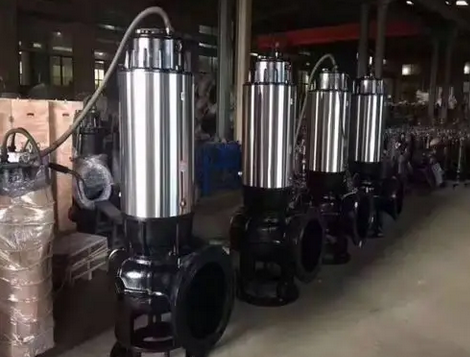Solution to overheating of sewage pump motor
Overheating of the sewage pump motor is a common problem that may be caused by a variety of factors. Here are some possible reasons and corresponding solutions:
1. Possible reasons
Head mismatch: If the actual head is much lower than the designed head of the sewage pump, the motor current will rise after the pump outlet flow increases, causing the motor to overheat.
Conveying medium problem: If the specific gravity of the conveyed medium is too large or the temperature is high, and it runs for a long time, the medium temperature in the pump body will be transferred to the motor, causing the motor to overheat.
Installation problem: When installing the sewage pump, if the spring is adjusted too tight, or the assembly quality is poor, causing friction in some parts, it may cause the motor to overheat.
Motor and pump shaft balance problem: The balance between the motor and the pump shaft is not good, which may also cause the motor to overheat.
Power supply problem: The power supply voltage is too high or too low, the three-phase voltage is asymmetric, or the phase is missing, which may cause the motor to overheat.
Problems with the motor itself: Wrong connection method of the motor, phase-to-phase short circuit or turn-to-turn short circuit of the stator winding, broken bars or defects in the squirrel cage rotor, failure of the ventilation system, bearing wear, etc., may all cause the motor to overheat.
Working environment problems: The motor winding is damp, dust, oil, etc. adhere to the winding, resulting in reduced insulation, or the ambient temperature is too high, which may cause the motor temperature to be too high.
Lubrication problem: The motor is left for too long, causing the lubricating grease to deteriorate and harden, or too much or too little lubricating oil is added to the sewage pump, or there are debris in the pump body, which may affect the lubrication of the bearing and cause the motor to overheat.
2. Solution
Adjust the head and flow: If the head difference is too large, the valve should be adjusted or a low-head pump product should be replaced. At the same time, the outlet valve can be closed to control the flow, thereby reducing the current.
Improve the medium conditions: If the specific gravity of the transported medium is too large or the temperature is high, consider reducing the specific gravity or temperature of the medium, or choose a more suitable sewage pump.
Re-adjust the installation: Check and readjust the spring compression to ensure good assembly quality and avoid friction between parts.
Correct the balance of the motor and pump shaft: Reassemble and correct the balance of the motor and pump shaft.
Solve the power supply problem: Check the balance of the power supply voltage and the three-phase voltage to ensure that the voltage is within the rated value. For the problem of phase-loss operation, a phase-loss protection device should be installed.
Check and repair the motor: Check the connection method, stator winding, squirrel cage rotor and other components of the motor to ensure that there are no faults. At the same time, check whether the ventilation system is unobstructed and whether the bearings are severely worn. Replace or repair them if necessary.
Improve the working environment: Keep the motor windings dry and clean to avoid dust, oil, etc. adhering to the windings. If the ambient temperature is too high, try to improve the working environment, such as building a shed for sunshade.
Solve the lubrication problem: Replace the new lubricating grease and ensure that the amount of lubricating oil in the sewage pump is between 1/3 and 2/3 of the volume of the bearing chamber. Clean the pump body and replace the new lubricating oil.

By regularly checking and maintaining the equipment, you can keep the equipment in good operating condition and reduce the occurrence of motor overheating problems.




